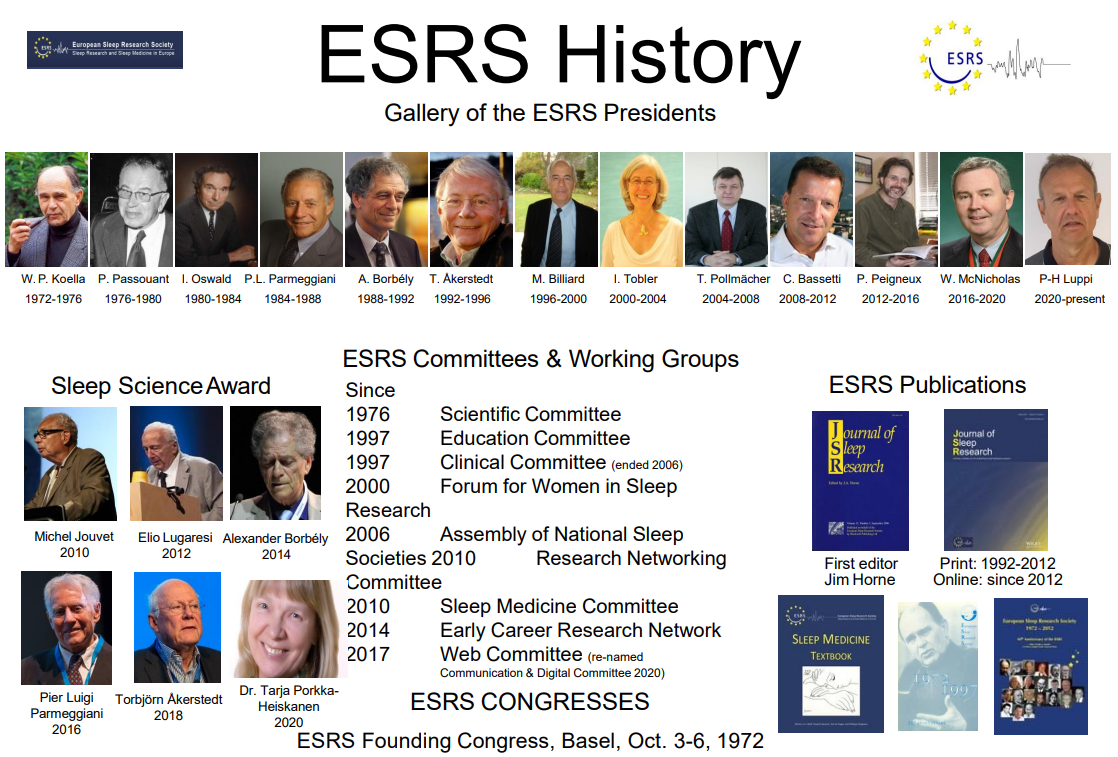Report on the ANSS Meeting (Brussels, 29-30 April 2016) – The ESRS Board Perspective
Tiina Paunio, Lino Nobili, Walter McNicholas, Marta Gonçalvez and Pierre-Hervé Luppi were the members of the ESRS Board present at the ANSS meeting. The president Philippe Peigneux was excused for medical reasons. Roberto Amici was also present as the head of the EU Committee and the organizer of the meeting with the EU representatives. The board was pleased to see that most presidents from all European sleep societies were present or represented.
EU meeting
Tina Kobilsek, Ivan Lukac (Road safety unit) and Mark Goldammer (Project officer, Neuroscience unit) were the EU representatives.
The discussion went well, and Mark Goldammer brought interesting numbers on the number of sleep projects funded by FP7 and Horizon 2020: 73 million Euros were granted in FP7 for 51 sleep related projects and 55 million in Horizon 2020 for 29 sleep related projects. The audience found the high amounts reported quite surprising and far from our feelings. More details were asked but it was apparently difficult to provide them. Mark Goldammer also made the same answers than those provided by Catherin Berens (head of Neuroscience unit, EU) when we met her previously, i.e. that Horizon 2020 is very much open to all fields and that we should apply more and propose more expert evaluators to the EU. Although this might be partially true, our feelings remain that we need, at least, to advocate more in parallel the need for a call on sleep. One way to do this is to contact the national representatives from all countries. To that purpose, a document to be submitted by NSS presidents to their EU national contacts was proposed. Roberto Amici presented this project to the NSS presidents, who were positive. The document was then revised collegially, and all presidents agreed to submit it to their national representatives. This action was viewed as an important step, although we might also need to ask an EU specialist to look over and correct our document for best efficiency. There is also the need to have people lobbying in EU circles, an issue that will be discussed in future board meetings.
ESRS activities
The board discussed with the NSS presidents the possibility of a shared membership. The idea that NSS members could become ESRS members with full access for a moderate sum was appreciated. Another discussed possibility was to give access to JSR (without becoming a full member) to NSS members for an additional fee. These options should be checked in the context of the recently renewed contract with Wiley, the publisher of JSR.
The ESRS board proposed to make proposals to the ANSS executive committee that will be evaluated before communicating to the assembly of the NSS presidents.
Tiina Paunio (head of the Education Committee) presented an update of the ESRS Somnologist and Technologist examinations and the related processes. There are now, altogether, approximately 200 applicants for the Bologna examination in September, which is a record number and shows the wide interest for recognition of sleep medicine at the European level. The examination is held in English, which might be one factor limiting the participation of technologists. Representatives from national committees suggested that for the Technologist examinations, the questions could be translated from English to different languages and back-translated at the request (and at the cost) of the relevant national sleep society. The translation process should however be coordinated by the Examination committee, which represents additional work for this Committee. Tiina Paunio will raise the issue at the next Examination Subcommittee meeting.
Finally, the ANSS proposed the creation of several task forces aimed at producing to-be-published guidelines on different topics (note that mentioned denominations are not restrictive and are given for future discussions)
- Sub-specialties in sleep medicine (Dirk Pevernagie,)
- Horizon 2020 (EU committee involved)
- Sleepiness: definition, measurement and clinical algorithms (Lino Nobili, Marku Partinen)
- Shiftwork (Hans Hamburger).
- Scoring rules for sleep architecture and microstructure (Liborio Parrino, Zoran Dogas, Copenhagen group)
- New biomarkers/diagnostic method for sleep breathing disorders, beyond AHI, Walter McNicolas) strongly linked to ESADA group
- Implementation in all countries of European Guidelines (Zoran Dogas)
The ESRS board reminds us that it is important to keep the integration with already existing networks. It was agreed that official proposals for ANSS committees should be approved by the ESRS board. It was also agreed that the ESRS and the ANSS should clearly define:
- Standard Operating Procedures (SOPs) for the development of Guidelines (alone or in collaboration with other societies)
- Potential financial supports (and rules for their obtainment) for such activities
- A place on the ESRS web site where an overview on these activities (and their update) is provided
After the meeting, other existing task forces were mentioned that are ready to join the process:
- Sleep and Epilepsy Task Force (working group involving people from the EAN, the ESRS and the European chapter of the ILAE; Lino Nobili).
- Narcolepsy (with the EAN and the EU-NN)
- Sleep and Stroke (with the ERS, EAN, ESO; Claudio Bassetti)
- European Insomnia Guidelines (Dieter Riemann)


